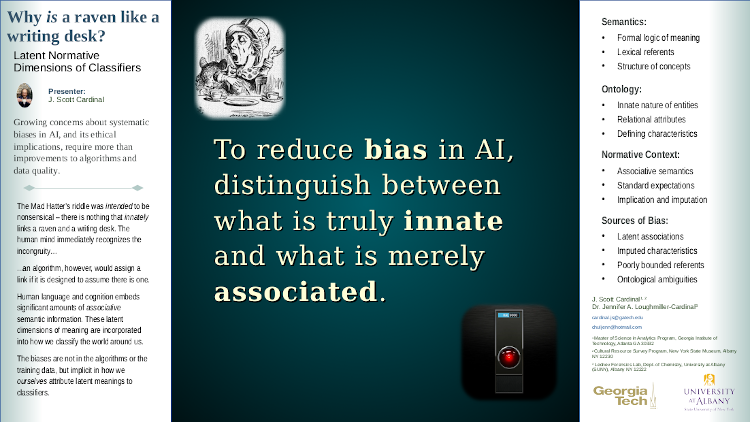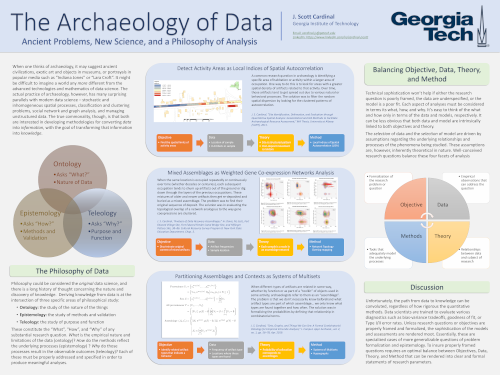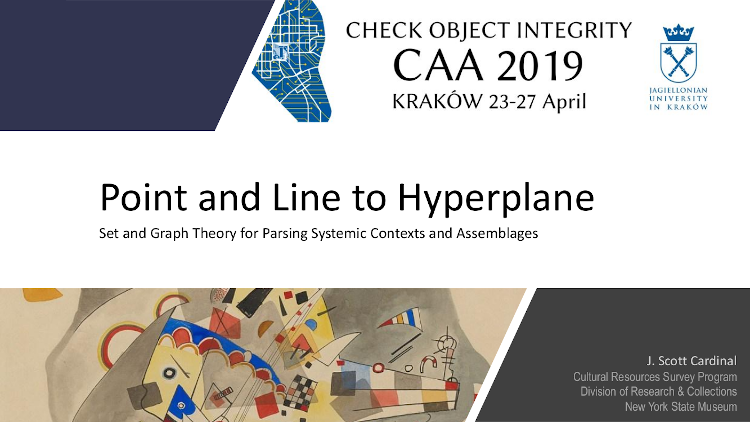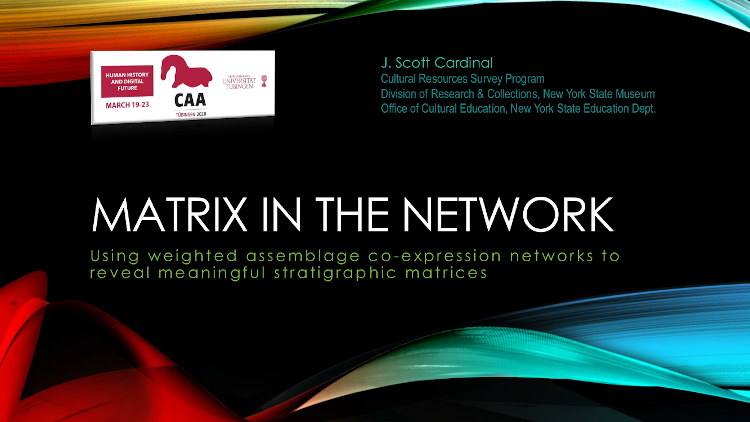J. Scott Cardinal
cardinal.scott@gmail.com

I'm a professional archaeologist turned data scientist. Much of my work and professional interests involve:
- Unsupervised and semi-supervised machine learning
- GIS and geo-statistics
- A bit of 3D photogrammetry
- Bayesian statistics
- graph-based algorithms
Presentations and Posters
Why is a Raven like a Writing Desk?
Poster presented at the 2021 virtual Career, Research, Innovation and Development Conference (CRIDC) at GA Tech.
There is much discussion about the ethics and perceived bias in machine learning and artificial intelligence. We took what we believe to be a somewhat different approach to the question – do we really know what we are training such models on? More specifically, are we training on characteristics that are truly innate or merely on our own implicit perceptions of associations?
The Archaeology of Data
Poster presented at the 2020 virtual Career, Research, Innovation and Development Conference (CRIDC) at GA Tech. Winner of the Executive Vice President for Research (EVPR) Award for Best Graduate Student poster.
When one thinks of archaeology, it may suggest ancient civilizations, exotic art and objects in museums, or portrayals in popular media such as “Indiana Jones” or “Lara Croft”. It might be difficult to imagine a world any more different from the advanced technologies and mathematics of data science. The actual practice of archaeology, however, has many surprising parallels with modern data science – stochastic and inhomogeneous spatial processes, classification and clustering problems, social network and graph analysis, and managing unstructured data ontologies. The true commonality, though, is that both are interested in developing methodologies for converting data into information, with the goal of transforming that information into knowledge.
Point and Line to Hyperplane
Recording of a paper I presented at the 2019 Computer Applications and Quantitative Methods in Archaeology (CAA) international conference at Jagiellonian University in Kraków, Poland. The topic was discussing the various abstractions and formalization involved in parsing complex systems of sets in an archaeological context, but I drift into a bit of information theory, distance norms, and high dimensionality.
Matrix in the Network
Recording of a paper I presented at the 2018 Computer Applications and Quantitative Methods in Archaeology (CAA) international conference at the University of Tübingen, Germany. The topic was possible applications of set and graph theory to the analysis of archaeological assemblages.



